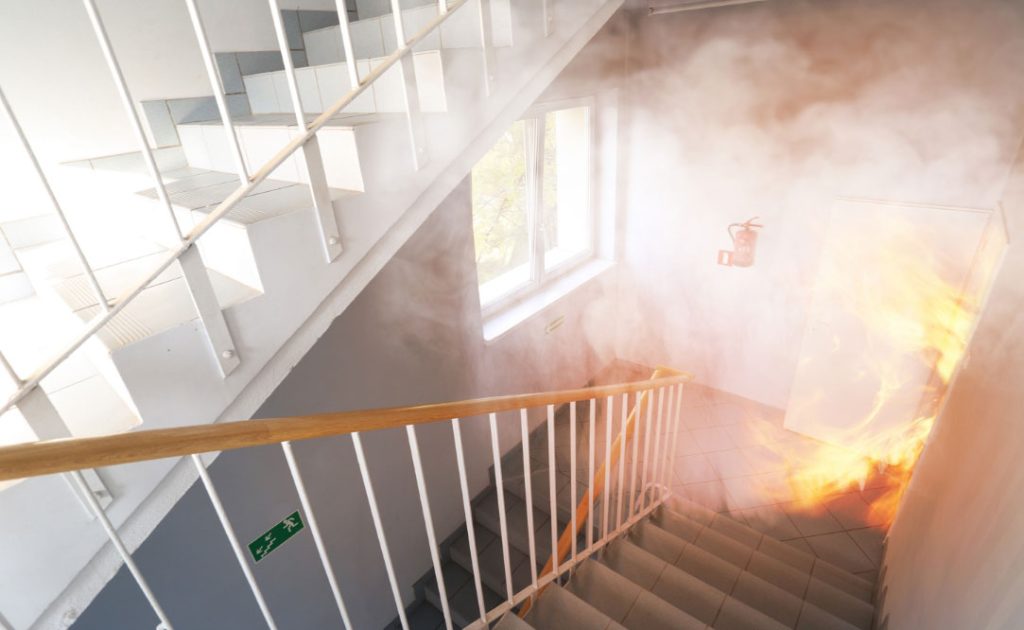Active vs Passive Fire Protection: Understanding the Difference

Fire Protection
Fire protection is a critical consideration for any building, ensuring the safety of occupants and reducing damage in the event of a fire. In 2020 alone, UK fire and rescue services attended over 500,000 fires, highlighting the importance of effective fire protection strategies.
Two fundamental approaches to fire protection are active and passive fire protection. While both methods play a vital role in mitigating fire risks, they function in different ways. This guide explores the key differences between them and how they work together to enhance fire safety.
What is the Difference Between Active and Passive Fire Protection?
Both active and passive fire protection measures are essential in preventing fire spread and ensuring a safe evacuation.
However, they operate differently:
Active fire protection involves systems that require an action to detect, suppress, or contain a fire. These measures typically rely on either human intervention or automated mechanisms.
Passive fire protection consists of built-in fire-resistant materials and compartmentation systems that help contain a fire and prevent its spread without requiring activation.
Understanding the role of each type of fire protection helps businesses and property owners create a comprehensive fire safety strategy that meets legal requirements and minimises fire risks.
Active Fire Protection
Active fire protection systems work to detect, suppress, or extinguish a fire before it can cause significant harm. These systems require activation, either automatically (via sensors and alarms) or manually (by an individual using firefighting equipment).
Examples of Active Fire Protection
Fire Extinguishers – Require manual operation to suppress a fire.
Sprinkler Systems – Activate automatically when heat or smoke is detected.
Fire Alarms & Smoke Detectors – Provide an early warning system, alerting occupants and emergency services.
Firefighters – The ultimate active fire protection measure, directly responding to and extinguishing fires.
Photoluminescent Egress Path Markers – Illuminate escape routes during a fire emergency.
Active fire protection is highly effective in fire suppression, but its success relies on regular maintenance and testing to ensure functionality when needed.
Passive Fire Protection
Unlike active systems, passive fire protection is integrated into the building’s structure to slow fire spread and protect escape routes. These systems do not require activation and work continuously to provide fire resistance.
Examples of Passive Fire Protection
Fire Doors – Specially designed fire-rated doors that prevent fire and smoke from spreading between compartments.
Dampers – Close automatically within ventilation systems to prevent fire and smoke movement.
Cavity Barriers – Installed within walls, ceilings, and floors to stop fire from travelling unseen.
Fire-Rated Glazing – Specialised glass that resists fire while allowing light and visibility.
Fire Batts & Fire Sealing Compounds – Used to seal openings around pipes, cables, and ducts to maintain compartmentation.
Intumescent Collars & Wraps – Expand under heat to seal penetrations where plastic pipes pass through fire-rated structures.
Acoustic & Smoke Seals – Applied around doors and joints to block smoke and heat transfer.
Passive fire protection ensures that compartmentation remains intact, limiting the fire’s ability to spread and providing additional time for evacuation and fire suppression.
Why You Need Both Active and Passive Fire Protection
For comprehensive fire safety, both active and passive fire protection systems should be implemented together. Each system plays a different role:
Active fire protection suppresses and extinguishes the fire, helping to reduce immediate danger.
Passive fire protection contains the fire, limiting its spread and maintaining the integrity of escape routes.
Active systems can fail due to water supply issues, power failures, or lack of maintenance. However, passive fire protection always functions, as long as it has been correctly installed and maintained.
By integrating both active and passive measures, businesses and building owners can enhance fire safety, ensure legal compliance, and protect lives and property.
Fire Protection Solutions You Can Trust
At Overbrook, we offer a range of fire protection solutions designed to keep your building safe and compliant. Our experts specialise in fire door installation, fire-resistant glazing, cavity barriers, and fire stopping solutions, ensuring that your property meets the latest fire safety regulations.
If you’re looking to improve your fire protection strategy, our team can assess your premises and recommend bespoke active and passive fire safety measures to suit your building’s needs.
Contact us today to discuss your fire safety requirements and ensure your property is fully protected.




